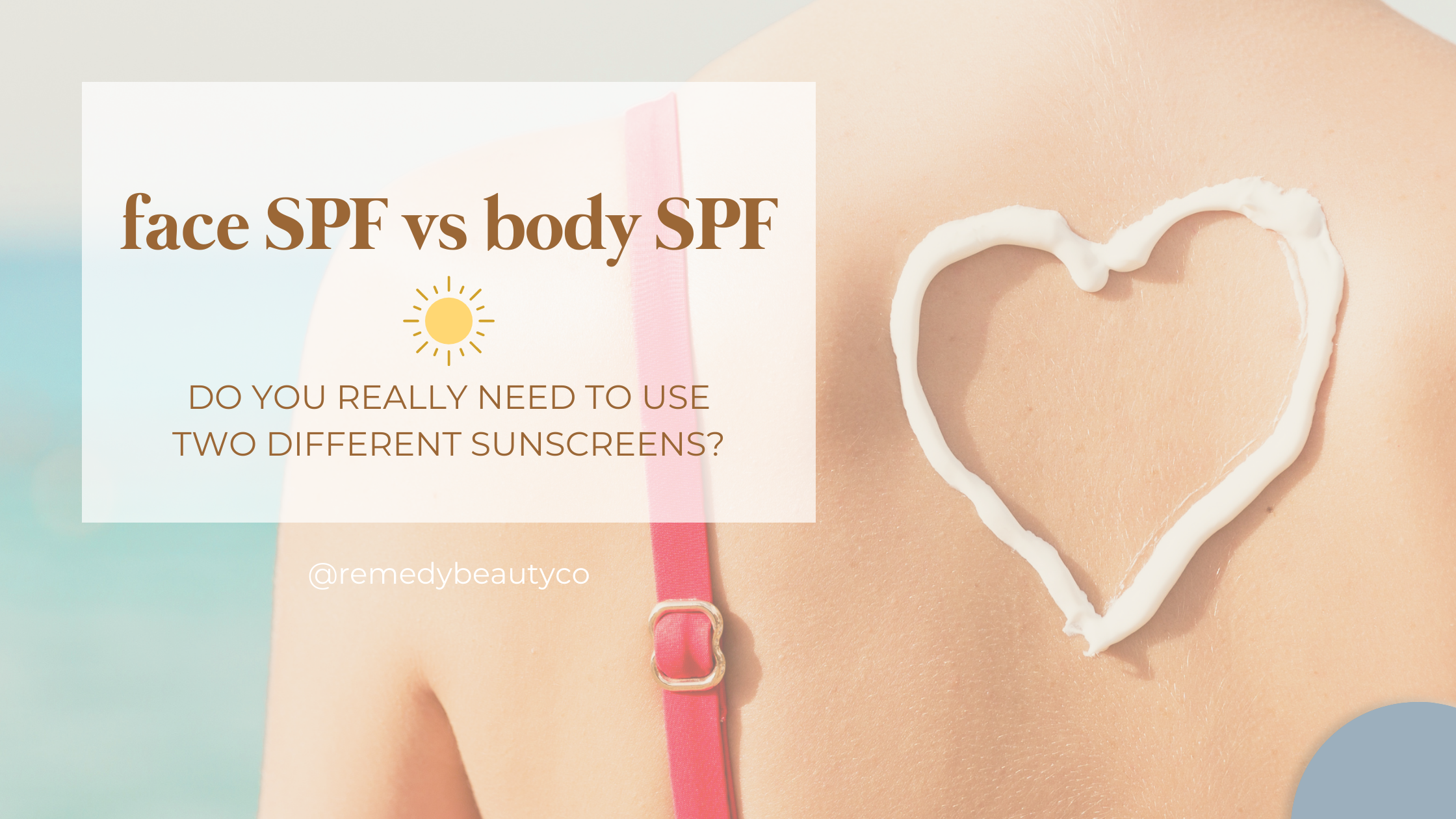Face SPF vs. Body SPF?
The main purpose of sunscreen is to protect your skin from harmful UV rays and if you’re using a body sunscreen on your face you’re still protecting your skin! That’s a win in my book and I would rather you keep up with that consistently than worry about buying another sunscreen!
This blog is going to share why I personally choose to use a separate SPF for my face and body and help you to understand the “key features” between the two types of SPF so that you can decide what is best to protect your skin.
01. differences in body SPF and facial SPF
Generally speaking, the formulation is going to be different between these types of SPFs, just like a facial moisturizer is formulated differently than a body lotion. You could use a body lotion on your face BUT because the ingredients are different and it could cause your face to break out. And you could use a facial SPF on your body but it’s generally going to come in a smaller bottle with a higher price point because the ingredients are higher quality and chosen to nourish the skin on your face.
Facial SPF will most likely be oil-free to help prevent breakouts and you probably won’t notice a white cast when using a facial SPF as opposed to a body SPF.
Another key difference is the application. Many brands that create facial SPFs have come out with powder brush applicators so the SPF can easily be reapplied over makeup whereas body SPFs are very commonly found in a spray form to make it quick and easy to apply when running around. You wouldn’t want to use a spray SPF on your face because it would probably leave your face looking quite greasy and a powder brush SPF applied all over your body would be quite time-consuming.
02. key features of a body and facial
Some of the key features I look for in an SPF are:
Water-resistant
Broad Spectrum Protection
Reef Safe Ingredients
SPF 30 or higher
Mineral SPF
SPF Lotion rather than spray
Hydrating Ingredients

